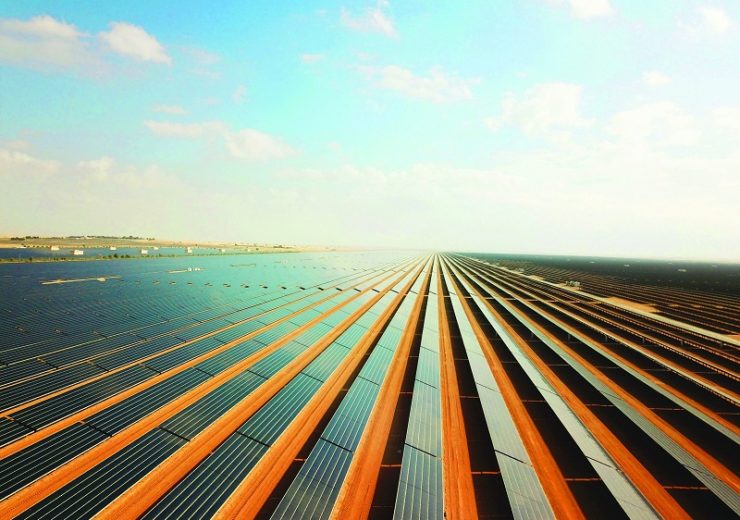The $400m Ibri-2 solar project will have the capacity to power about 33,000 homes and offset 340,000 tonnes of CO2 emissions annually

ACWA Power is the lead investor in the project. (Credit: ACWA Power)
A consortium comprising ACWA Power, Gulf Investment Corporation (GIC) and Alternative Energy Projects (APEC) has achieved the financial close for the 500MW Ibri-2 solar PV project in Oman.
Estimated to cost approximately $400m, the Ibri-2 independent power project (IPP) is planned to be built around 300km west of Musca.
The project is supported by $275m senior debt, which will be provided by a syndicate of lenders including Asian Infrastructure Investment Bank (AIIB), Bank Muscat, Riyad Bank, Siemens Bank, Standard Chartered Bank and Warba Bank.
In 2019, the ACWA Power-led consortium was selected by the Oman Power and Water Procurement Company (OPWP) to develop the Ibri-2 solar project on build, own, operate (BOO) basis.
The consortium will also be responsible for the development, finance, construction, and operation of the solar PV plant.
The Ibri-2 project is expected to have generation capacity enough to power about 33,000 homes and offset 340,000 tonnes of CO2 emissions annually.
ACWA Power CEO Paddy Padmanathan said: “This milestone further asserts our commitment to provide low cost and sustainable electricity supply solutions to clients like the Oman Power & Water Procurement Company (OPWP).”
ACWA Power owns 50% stake in Ibri-2 solar PV project
ACWA Power is the lead investor in the project with 50% stake while GIC and AEPC will have 40% and the 10% interests respectively.
ACWA Power chief investment officer Rajit Nanda said: “We are pleased to achieve a successful closing of yet another financing in Oman which is a key country for ACWA Power’s operations in Middle East.
“The project which is the largest utility scale Solar PV project in Oman, will also be the first renewable energy financing for AIIB in the GCC region, paving the way for a stronger partnership with the Beijing based international multilateral bank in the future.”
